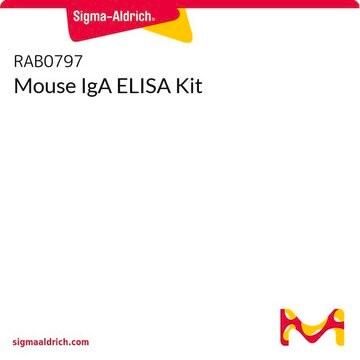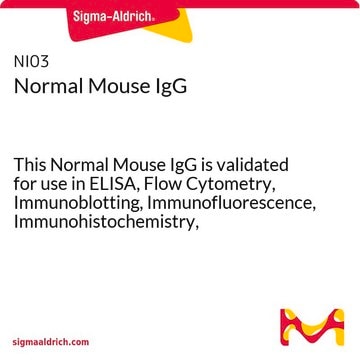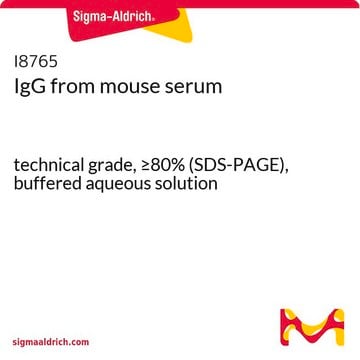11333151001
Roche
Mouse IgG ELISA
Synonyme(s) :
quantification kit for hybridomas | hybridoma quantification | monoclonal quantification
About This Item
Produits recommandés
Utilisation
sufficient for ≤400 tests
Fabricant/nom de marque
Roche
Technique(s)
ELISA: suitable
Conditions d'expédition
wet ice
Température de stockage
2-8°C
Description générale
Assay time: Approximately 2.5 - 4.5 hours
Sample material: Hybridoma supernatant, ascites, mouse sera, and purified IgG preparations (the assay is not applicable for the quantification of IgG preparations purified with strongly denaturing buffers, for example, during the elution from affinity chromatrography matrices)
Sensitivity: Approximately 10 ng IgG/ml
Spécificité
Application
Actions biochimiques/physiologiques
Caractéristiques et avantages
- Reliable: Highly specific antibodies supplied with the kit
- Easy: Follows a standard ELISA protocol
- Fast: Results in 2 - 4 hours
- Sensitive: Detects down to 10 ng/ml
- Highly specific: No crossreactivity with FBS
Conditionnement
Principe
Notes préparatoires
- Open standard carefully to avoid loss of lyophilizate material. Add exactly 500 μl double-distilled water. Note: On the label of vial 5, the contents of IgG per vial are provided in mg/fl (flask). Since the contents of the vial are dissolved in 0.5 ml, the IgG concentration (in mg/ml) will be exactly twice the value printed on the label after reconstitution.
- Close the bottle carefully. Allow to the bottle to equilibrate at 15 to 25 °C for 30 minutes. Then dissolve the contents of the bottle completely by gentle swirling. Note: Avoid the formation of foam, and do not shake.
After complete reconstitution, pipette 10 aliquots (50 μl each) into the remaining 10 empty vials, close tightly.
Storage conditions (working solution): Standard Solution
Stable for several months when stored in aliquots at -15 to -25 °C; avoid more than three freeze/thaw cycles.
Autres remarques
Composants de kit seuls
- Coating Antibody, anti-mouse-IgG
- Coating Buffer Concentrate
- Detergent
- Blocking Reagent
- Standard
- Conjugate, optimized mixture of anti-mouse-k-POD antibody and anti-mouse-l-POD antibody
- Substrate Buffer
- ABTS Substrate Tablets
- 20 empty vials, for the preparation of the standard dilutions
Mention d'avertissement
Danger
Mentions de danger
Conseils de prudence
Classification des risques
Aquatic Chronic 3 - Eye Dam. 1 - Skin Sens. 1
Code de la classe de stockage
11 - Combustible Solids
Classe de danger pour l'eau (WGK)
WGK 2
Point d'éclair (°F)
230.0 °F
Point d'éclair (°C)
110 °C
Certificats d'analyse (COA)
Recherchez un Certificats d'analyse (COA) en saisissant le numéro de lot du produit. Les numéros de lot figurent sur l'étiquette du produit après les mots "Lot" ou "Batch".
Déjà en possession de ce produit ?
Retrouvez la documentation relative aux produits que vous avez récemment achetés dans la Bibliothèque de documents.
Les clients ont également consulté
Notre équipe de scientifiques dispose d'une expérience dans tous les secteurs de la recherche, notamment en sciences de la vie, science des matériaux, synthèse chimique, chromatographie, analyse et dans de nombreux autres domaines..
Contacter notre Service technique














